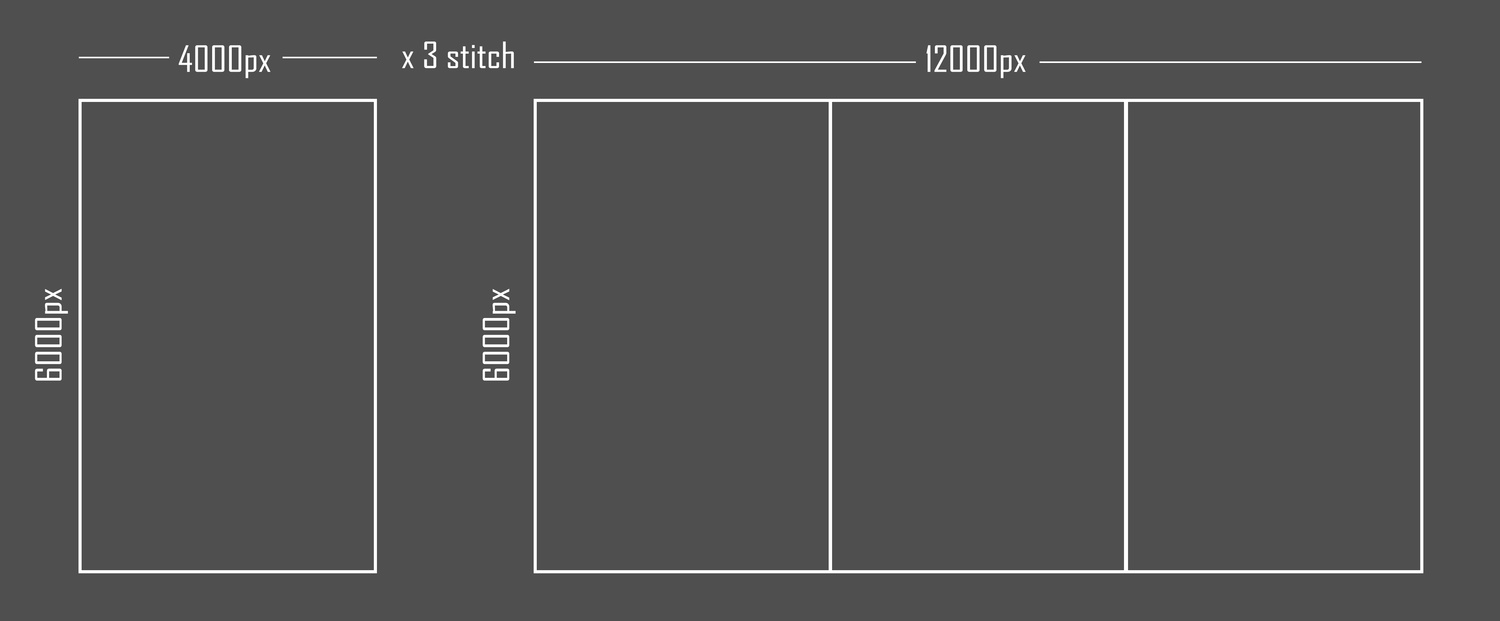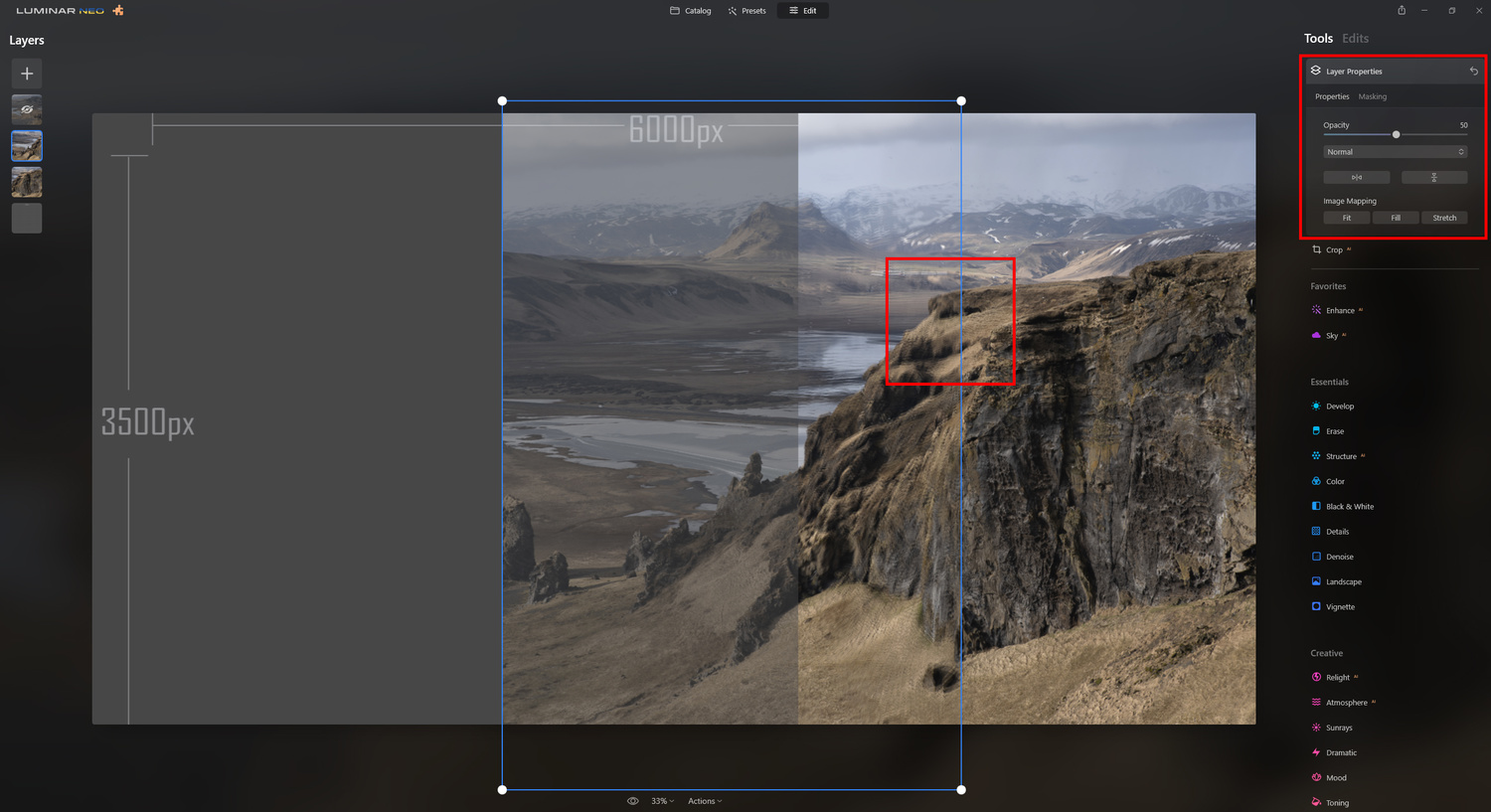Editing software from Skylum has gone through a lot of changes over the past few years, and with its new software Luminar Neo, there's still lots of room for evolution in what the software can do for its users. HDR Merge was recently added as an expansion for the software, and this is one feature that had been asked for by its users for some time. Another feature that has been requested in forums quite frequently is the ability to stitch panoramas.
Skylum may be working on this as a future expansion pack, but in the meantime, if you are a user of the software and enjoy shooting panoramas, perhaps this quick workaround tutorial will allow you to do just that.
The Setup
Luminar Neo is primarily an image editor that works with images imported into the software and because of this, you cannot create a blank document, so with this in mind, you have to create a blank base layer as a starting point. As you can't determine what aspect ratio and size of your final stitched panoramic will be, it's best to create a few blank base images as templates. The one I created for this measures 3,500 x 6,000 pixels. Although smaller than the raw output for the Nikon Z 7II individual images should provide me with enough latitude to create a three- or four-stitch final pano. If you want a more precise size for your base layer, take the dimensions of your camera's image output, and multiply the width by how many images you require to stitch. This is assuming, of course, that you have shot your pano in the vertical orientation.
This will result in a massive file size, hence the reason I created my template a lot smaller, so it's best to judge this for yourself. Also, remember that you are able to scale your images once in Luminar should you create smaller templates. You have to create a new template with a different name for each new pano due to the way Luminar imports and collates images.
Step One
With your new template imported into Luminar, go to the edit panel and begin adding your images via the Add New Layer option. Do this sequentially until all the required images are loaded. 
Step Two
Begin by adding the first image to a new layer and turn the opacity of that layer up to 100%.5
Step Three
Repeat the process and add your second image, only this time, leaving the opacity at the default 50%. Select a dominant item in your scene and move the new layer over the same area on the previous layer and match them up as best you can; the opacity being at 50% also aids in this process. When overlaid, the matching areas should seem to sharpen, indicating a good match. If unsure during this step, adjust the opacity anywhere from 50 to 100% to keep checking how it looks. I chose the corner of the cliff edge and the high-contrast overhang indicated in red for this image. Once I was happy, it was a match, so I moved the opacity slider to 100%.
I'm sure by now you can tell this is a completely manual process, that is slightly time-consuming, but it does yield the results. This process can be done in little to no time with Lightroom or Photoshop, but this tutorial is aimed at users of Luminar solely who want to be able to stitch panoramas within the software.
Step Four
Repeat the above process for the rest of your images, and in this case, for myself, it was only three images. At each point of adding a new layer, you have the ability to scale the images to get them to match, but I would recommend that you try to match them without scaling first.
Step Five
Now comes the masking and blending to remove any straight edges occurring from your overlapping images. As I added my images from right to left, I now work backward with the masking from left to right using a small brush with the softness at 100 and, in this case, the strength at 100. You may want to lessen the strength the first few times you do this until you get comfortable with the process. That way, you can brush over the area incrementally until you get your desired blend. 
Repeat this process with all your overlapping images until you get the desired result. Remember that not every edge will need masked out. You'll know what does if you try it. I also worked zoomed into the image at 50% and regularly zoomed back out to the full image so that I could check for any anomalies. 
Step Six
Once you are happy with all your blends, it's time to crop and export the image ready for editing. This is the only way you can edit the image in its entirety due to the fact that currently, you can't combine all the layers into one as you could with Luminar 4.3.
Step Seven
Re-import your image and edit away.
Conclusion
For non-Luminar users, this will seem like a totally long-winded exercise, considering there is other software out there that can do this in no time with no effort, but there are some users out there who don't want to use a subscription-based software and are quite happy to have Luminar Neo, Luminar AI, or Luminar 4.3 as their sole software. Hopefully, Skylum will add this feature in future updates, but for now, this is one way of doing it in the current software. Incidentally, if you follow these steps in Luminar 4.3, instead of exporting to re-import for editing, just stamp the layers into a single layer and edit from there.
The entire process for this image from start to finish took just over 14 minutes, and I hope for the Luminar users out there this has proven to be of some use to you or has provided you with some thought process along the way for combining images. If you would like to see the process from start to finish you can check the video out here.







I'll have to check this process out in full! I've been intrigued by Luminar Neo, but have leaned on Affinity Photo for panorama merges. With paid updates finally coming to Affinity, I'd be willing to throw money at a Luminar license.
I also swear by Affinity Photo 2...it works very well, with sometimes having to repair stitched-seems with Topaz AI.
Very interesting, but you lost me already at step 0: ... you have to create a blank base layer as a starting point. How do I do that? Perhaps you can describe this part as well. Thank you.